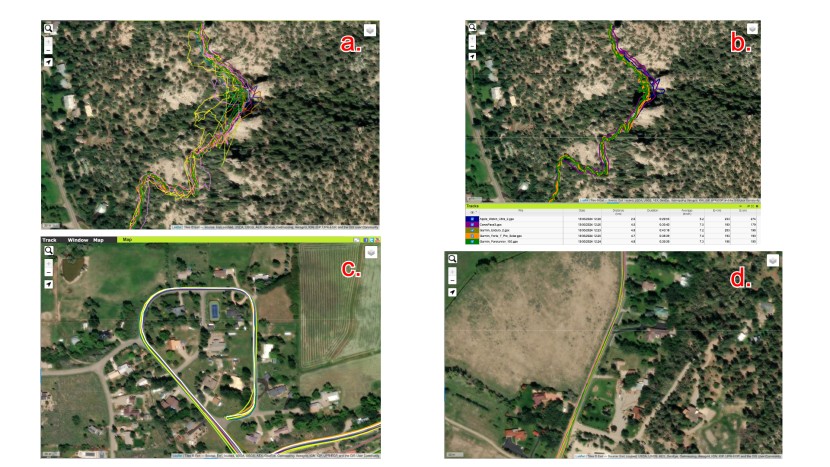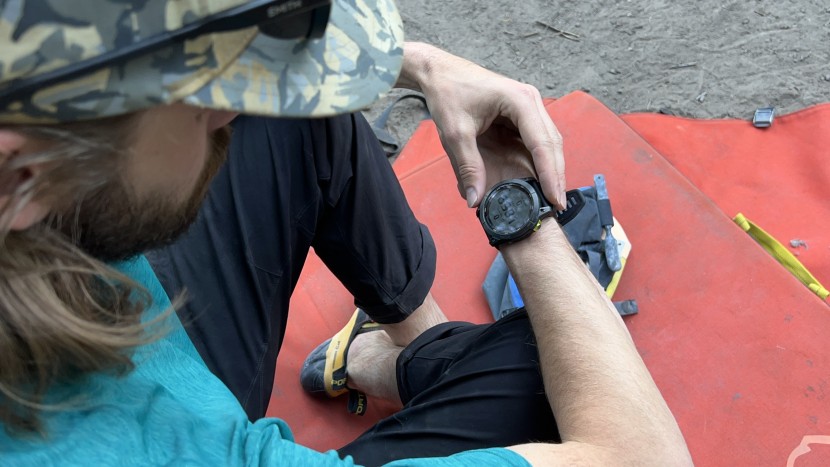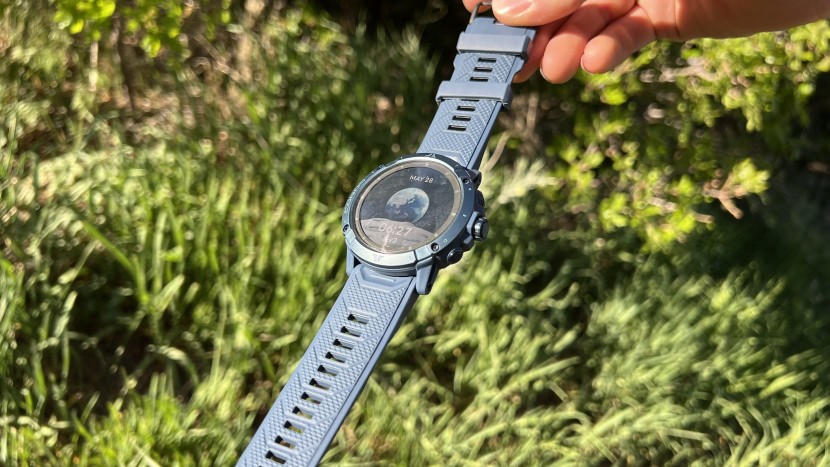We've updated our GPS watch metrics recently, digging a bit deeper into the topics and areas we find most important in a GPS watch. Also, it should be easier for the buyer to find which products are most suited for them based on the restructuring of the weightings. In our opinion, each of the categories tested is pretty equally important, but their overall weighting percentage is adjusted higher or lower to provide a range between each product. Our goal was not to award products a higher score simply because it has more features or battery life.
Our diverse test team captured different perspectives on what makes an outstanding GPS watch. Our lead tester logged fifteen to twenty training hours a week and monitored virtually every one of his training and active hours with one or more of the products in this review. While his usage may differ from yours, he hopes to make your decision-making process easier through his testing.
Accuracy
Our accuracy testing is broken into two groupings evaluating both wrist heart rate and GPS performance. For wrist heart rate, we used a control dataset with a chest-worn heart rate monitor. Specifically the Polar H10 monitor, which has been tested by third parties to provide reliable, accurate HR data. This chest dataset was then compared to the wrist dataset for each individual watch while moving and resting. Both the wristwatch and the chest strap were worn on the same control course, which is exactly 0.5 miles. This shorter run allowed us to compare the actual data points downloaded from the watch over 800 individual timestamps recorded in this period. This data was then compared across our test group for each of the watches.
GPS accuracy was tested on two different courses. The first was a steep, hard line of sight control course that features many close cliffs that should stress the connection of watches with less technical GPS systems. Secondly, the HR course which is exactly two miles. We will analyze the GPS tracks for both courses, looking for signs of GPS disruption or areas where the GPS falls short of the control track. To provide fair comparison where possible, we make sure each watch features the same refresh rate.
Due to the lack of controls available, we will not be testing various features like HRV, sleep scores, running fitness, or other HR-related metrics, as we cannot confirm their effectiveness or validity.
Activity Use
One of the most important factors of a GPS watch is its performance during activities. This includes items like the data screens, how the screen looks during different lighting conditions, or the usage of lap buttons or touch screens. Previously, this topic was hidden in multiple different metrics, but our readers made it clear this was important to them. We also looked at the various other features found in activity modes, such as navigation features, media controls, and sport modes. We tested all of this during a variety of activities, most specifically trail running, kayaking, climbing, skiing, and backpacking. This metric should be an easy way to determine which watch performs the best during an activity.
Everyday Use
GPS watches seemingly contain hundreds of features, but which ones are the ones you will actually use? We've dedicated this metric to those we anticipate you will most likely use. Items like health tracking, sleep scores, alarms, media controls, and notifications. Also included in this metric is the phone companion app, which controls and allows customization of the GPS watch. We tested each of these apps and the everyday usage from days on trail to days in the office. Some watches focus on athletics, while others are more optimized for smartwatch style or daily health tracking. This should be the perfect metric for readers to realize what they are looking for most in a GPS watch. Is it sleep tracking and daily stats, or is it tackling the 100 miler on your race schedule? We looked at these features and determined their ease of use and how they improved our experience during the day.
Extra Features
Instead of providing points to whatever watch has the most features, we determined it would be better to have a specific category for the excess features found on these GPS watch models. Items like travel jet lag, dedicated flashlights, or red modes. In this metric, we will discuss our experience with the items that were less used and how they impacted our time with each watch. These extra features often come with a high price tag, but are they something you'll actually use? Previously, we lumped these items into a singular feature group, which often awarded extra points to the models that simply cost more money. Hopefully, by extracting these extra features, you can see which model really does provide the most without it seeming like these are requirements for a good GPS watch experience. We'll pick out some of our most used favorites, but ultimately, there are simply too many features to discuss in a single article.
We tested these features during our day-to-day usage and during all of our activities. By wearing the watches 24/7, we found out what we liked about some models and what we missed when switching to a different brand. If you simply want the best, it's important to pay attention to this category, but if you really want a simple watch or something that costs less, minimizing your attention to this metric could be warranted. We hope our specific categories make it easier to understand what's best for you.
Wearability
Wearability is mainly a physical function of size, fit, comfort, raw materials, and subjective appearance. Larger watches will not fit all wrists. Smaller ones may fit more wrists, but they make it difficult to read the screen. We measured and weighed each one and noted whether they were difficult to wear under typical running and athletic clothing and if size affected the fit and, thus, the accuracy of the optical heart rate monitor. We noted information about the type of strap used, its ability to quickly release, and any other notable issues with buttons accidentally getting pressed while exercising.
Battery Life
Battery life is most important to endurance athletes, but it can also be frustrating to recharge your watch every day, even as a recreational athlete. Several variables make it challenging to test the battery life of these GPS watches fairly because it hinges on how you use your watch. There are two important battery usage types — normal use and activity usage. We tested normal use (some manufacturers call this "smartwatch usage") by running just a few hours a week and using the device as a daily smartwatch — which included fielding random numbers of text notifications per day.
We also tested battery usage to determine how many hours each watch can last during a continuous activity, like a race. To do this, we let each watch run tracking data from a full charge until it was empty to see which one would make your 100-mile ultra without needing a charge and which wouldn't. An ultra runner, cyclist, or triathlete might need the battery to last during their activity for 10+ hours. We also explored various battery modes and battery-saving features. These are useful in providing the user with control over extending the life of their models in both smartwatch or GPS recording modes. Having easy access to these modes increased the battery life score. While pure numbers produced a high score, having easy-to-use battery functions also helped a product gain points by allowing the user to understand and feel confident in changing settings and modes easily.








